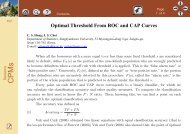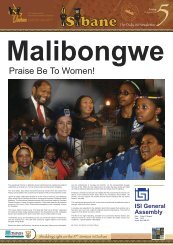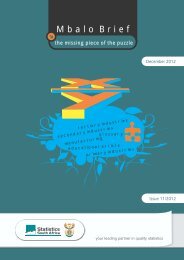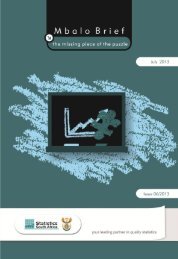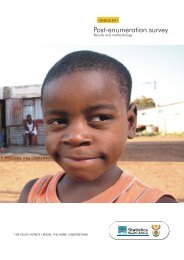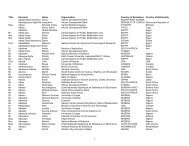General household survey - Statistics South Africa
General household survey - Statistics South Africa
General household survey - Statistics South Africa
You also want an ePaper? Increase the reach of your titles
YUMPU automatically turns print PDFs into web optimized ePapers that Google loves.
<strong>Statistics</strong> <strong>South</strong> <strong>Africa</strong> 40<br />
P0318<br />
16. Access to food<br />
Between 2002 and 2008, the GHS has asked <strong>household</strong>s to indicate whether and how often adults and<br />
children went hungry because there was not enough food in the <strong>household</strong>. The question was discontinued<br />
in 2009 but reinstated in the 2010 questionnaire. Figure 38 shows that the percentage of <strong>household</strong>s that<br />
experienced hunger decreased from 23,8% in 2002 to 10,5% in 2007, before rebounding slightly to 13% in<br />
2008. The percentage dropped to 11,5% in 2011. The percentage of persons who were vulnerable to<br />
hunger reflects the pattern of <strong>household</strong>s. The percentage of <strong>household</strong>s that were vulnerable to hunger<br />
declined from 29,9% in 2002 to 13% in 2011, including a spell during which the percentage increased to<br />
16,1% in 2008 before continuing its decline.<br />
Since 2009, the GHS questionnaire has also included a set of questions based on the Household Food<br />
Insecurity Access Scale (HFIAS) to determine <strong>household</strong>s’ access to food. These questions aim to<br />
measure <strong>household</strong> food access by asking <strong>household</strong>s about modifications they made in their diet or<br />
eating patterns during the previous month because of limited sources to obtain food. The index provides a<br />
slightly more sensitive measure of food access than the question on hunger. The question used in 2009<br />
was expanded in 2010 with the addition of a question on possible decreases the variety of foods<br />
consumed, making it incompatible with the index used for 2010 and 2011. The index seems to reflect a<br />
similar pattern, though it is slightly higher. Figure 38 shows that the percentage of <strong>household</strong>s that had<br />
limited access to food decreased from 23,6% in 2010 to 21,2% in 2011. Simultaneously, the percentage of<br />
persons with more limited access to food declined from 29,0% in 2010 to 24,6% in 2011.<br />
Figure 38: Vulnerability to hunger and access to food, 2002-2009; 2010-2011<br />
Figure 39 shows that food access problems were the most serious in North West where 32,9% of<br />
<strong>household</strong>s had inadequate or severely inadequate food access. They were followed by Northern Cape<br />
(29,7%), Mpumalanga (26,1%), Eastern Cape (25%), Free State (22,6%) and Western Cape (22,4%).<br />
<strong>General</strong> Household Survey, July 2011



